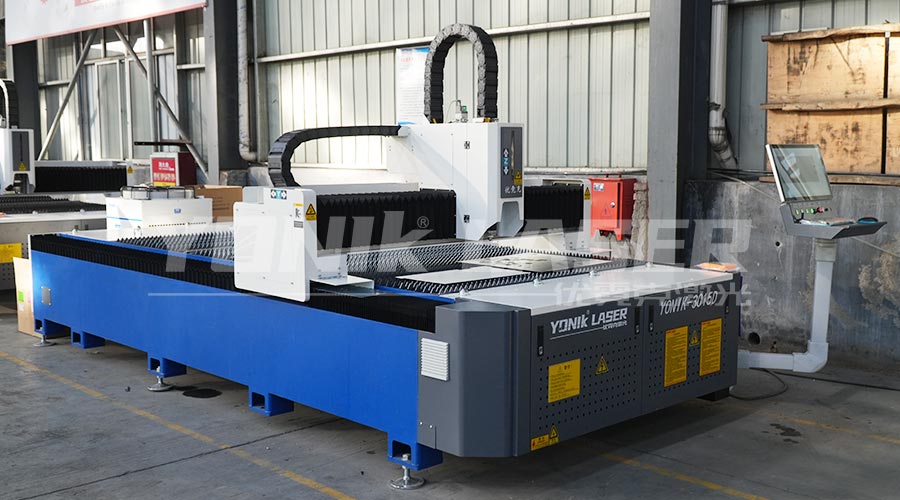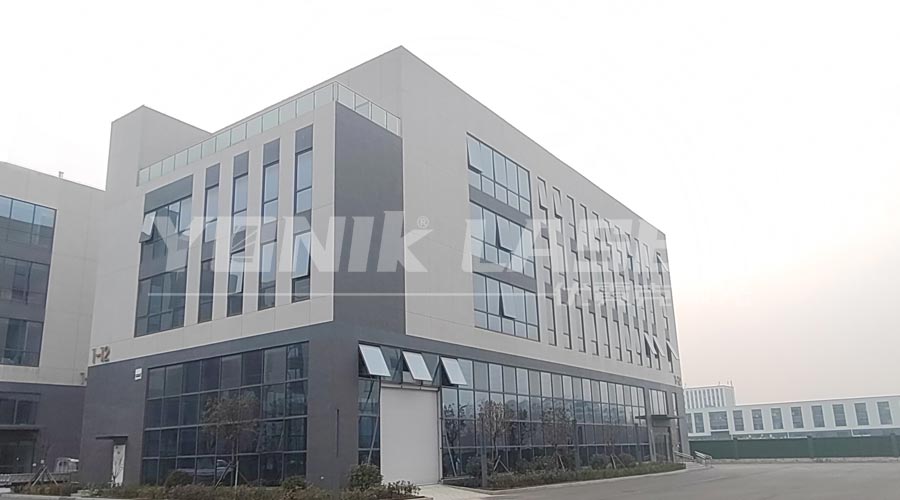The selection of a metal laser cutting machine is like choosing the "heart" for a factory, and a wrong decision on one device can result in hidden losses of hundreds of thousands of yuan per year. Market research shows that 60% of users are forced to purchase a second machine due to incorrect power selection, and 35% of factories experience a material utilization rate decrease of over 20% due to mismatched sizes. This article breaks down the three core dimensions of power, format, and brand from a practical perspective, exposing the "hidden rules" of the industry and helping you accurately avoid pitfalls!

1、 Power selection: the game between penetration and cost
The laser power directly determines how thick and fast it can be cut, but it is not necessarily better with higher power.
1. Thin plate processing (1-6mm)
1500-3000W fiber laser: cutting 1mm stainless steel at a speed of up to 40m/min, with a processing cost of only 0.2 yuan per meter
Economic trap: When cutting 3mm carbon steel with equipment below 2000W, the speed needs to be reduced to below 8m/min to ensure the quality of the cross-section
2. Processing of medium and thick plates (8-20mm)
6000W high-power equipment: cutting 12mm carbon steel at a speed of 4m/min, with oxygen assisted taper controlled within 0.8 °
Energy consumption truth: The actual power consumption of a 6000W device is about 25kW/h, which is 80% higher than the 3000W model, but the energy consumption per unit thickness is actually reduced by 30%
3. Processing of ultra thick plates (25mm+)
Wanhua level laser: Cutting 30mm stainless steel requires high-pressure nitrogen gas (2.5MPa), but the operating cost increases sharply
Alternative solution: Plasma cutting is recommended for plates over 20mm, which can reduce the overall cost by 50%
The Golden Rule:
Our business mainly focuses on equipment below 3mm, with the highest return on investment for 3000W equipment
Involving 8-15mm sheet metal processing, 6000W equipment can save secondary purchase costs in three years
Beware of "false power": Use an infrared power meter to measure the laser output, if the deviation is greater than 5%, return immediately
2、 Format planning: Balancing material utilization and site costs
For every 1 square meter increase in equipment size, the annual rental cost of the factory increases by 20000 to 30000 yuan, but blindly reducing the size will lead to a surge in material waste rate.
1. Standard board adaptation
1500 × 3000mm format suitable for 95% of cold-rolled sheet raw materials
The 2000 × 6000mm format is designed specifically for wide steel plates in the shipbuilding industry, but the equipment price doubles
2. Dynamic format technology
Scalable rail system: expands the 2000 × 4000mm format to 2000 × 6000mm through rail extension
Modular splicing solution: Two devices work together to process ultra long workpieces, saving 50% of purchasing costs
3. Hidden cost calculation
For every 500mm increase in width, the weight of the crossbeam increases by 200kg, resulting in a 15% decrease in acceleration
A dual drive system is required for sizes above 2500mm, otherwise the positioning accuracy error will be greater than 0.05mm/m
Avoiding pitfalls guide:
Measure commonly used board dimensions, equipment size=maximum board length and width+200mm (safety margin)
Optional rotating shaft for processing irregular parts, reducing the required size by 40%
Reject 'pseudo customization': non-standard format models have a after-sales maintenance cycle of up to 3 months
3、 Brand Game: Domestic Rise vs. Import Myth
In 2023, the market share of domestic laser cutting machines will exceed 75%, but the high-end field is still monopolized by European and American brands.
1. Breakthrough battle of domestic equipment
Technological breakthrough: Ruike Laser 120000 watt fiber optic breaks foreign monopoly, beam quality M ²<1.2
Service advantage: 24-hour response+county-level network coverage, spare parts delivery speed is 3 days faster than imported brands
Price strategy: The price of models with the same power is only 1/2-2/3 of that of imported equipment
2. Imported brand moat
Precision machining: TRUMPF laser cutting machine has a positioning accuracy of ± 0.01mm, suitable for aerospace parts
Intelligent control: BYSTRONIC is equipped with an AI process library that automatically matches 5000+material parameters
Service life: IPG photon 10000 watt laser MTBF (mean time between failures) exceeds 100000 hours
3. Value points of joint venture brands
MAZAK's hybrid technology: fiber optic+CO2 dual laser head free switching
AMADA's sheet metal ecosystem: data exchange between cutting machines, bending machines, and welding machines
Decision tree model:
Budget<1 million: Priority given to domestic brands such as Dazu and Bond
Processing accuracy requirement ≤ 0.05mm: imported equipment such as Tongkuai and Baichao must be selected
Special material processing (copper, titanium alloy): Choose a professional manufacturer equipped with a purple laser
4、 Hidden traps: secrets that product manuals won't tell you
1. Traceability of core components
Request for proof of original laser manufacturer: Some assembly plants have refurbished second-hand lasers, resulting in a 50% reduction in lifespan
Check rail brand: HIWIN rail from Taiwan has a 30% higher positioning accuracy than counterfeit products
2. Energy consumption black hole
Power ratio of water cooling machine: The power consumption of the water cooling system of the 3000W equipment may reach 8kW, accounting for 40% of the total energy consumption of the whole machine
Standby power consumption trap: Some models still consume 3kW/h of power in standby mode
3. Software system lock area
The G-code system of imported equipment may block third-party software, with an annual software service fee of up to 100000 yuan
Priority should be given to selecting control platforms compatible with Siemens 840D system for domestic equipment
5、 Long term value: full cycle management from procurement to operation and maintenance
1. Consumables monitoring system
Protect lens lifespan: Check transmittance every 8 hours in a nitrogen cutting environment
Nozzle replacement cycle: After continuous processing for 200 hours, if the aperture expands by more than 0.03mm, it must be replaced
2. Upgrade reserved space
Reserved 10% power margin for electrical cabinet: It is recommended to configure cables according to the 4000W standard for 3000W equipment
Mechanical structure strengthening: reserved sensor interface on the crossbeam for easy installation of visual positioning system in the later stage
3. Second hand equipment identification technique
Laser hour verification: Real working time is read through the control system, with a tampering rate exceeding 40%
Wear detection of guide rail: Use a dial gauge to measure the straightness of the guide rail. If the wear is greater than 0.1mm/m, it is considered scrap
Conclusion: Building a 3D Decision Model
Business dimension: Calculate the distribution of processed sheet thickness throughout the year, with 80% of orders corresponding to power as the benchmark
Space dimension: Equipment footprint=Area size x 2 (including operating space), floor height needs to be greater than 4 meters
Financial dimension: Reserve 30% of the equipment price for spare parts/consumables/upgrade costs
Immediate action: Click to obtain the "Laser Cutting Machine Procurement Cost Calculator", enter parameters such as material type and monthly output, and automatically generate a 5-year investment return analysis report! Private message appointment with industry experts to obtain free factory layout and equipment selection planning solutions.

Related keywords: power selection of metal laser cutting machine, equipment size calculation method, evaluation of domestic laser brands, technological advantages of imported equipment, procurement cost control strategy, precision testing standards for guide rails, laser life appraisal, full cycle operation and maintenance management
2025-07-22
2025-07-21
2025-07-19